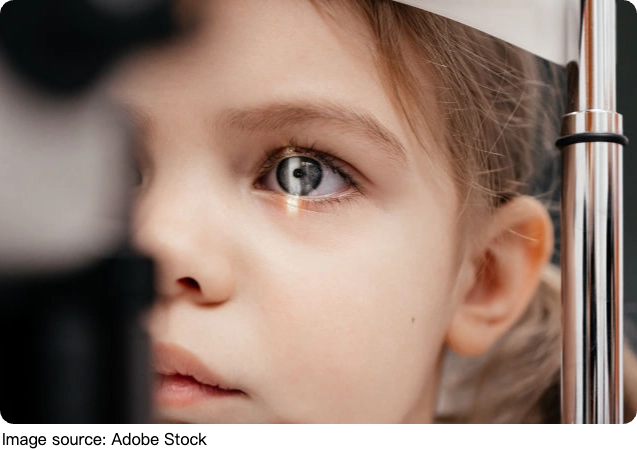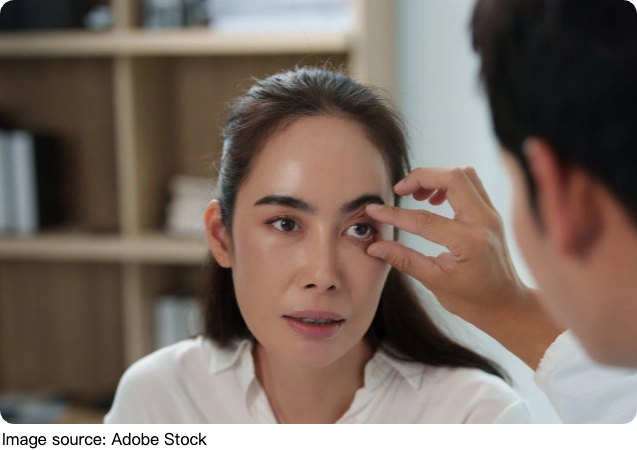Presbyopia Disorder Alert!

Presbyopia is a pervasive age-related visual disorder characterized by the gradual decline in the eye's ability to focus on close objects.
Unlike other refractive errors such as myopia or hyperopia, presbyopia is a physiological condition that emerges as a natural consequence of aging, beginning typically in the early to mid-40s and progressing into later decades of life.
This condition significantly affects near vision, posing challenges in daily activities like reading, sewing, or using digital devices. Although universal in occurrence, presbyopia's impact on visual function varies among individuals, necessitating a comprehensive understanding of its underlying mechanisms, clinical presentation, and management options.
Biomechanics and Pathophysiology
The fundamental cause of presbyopia lies in the alteration of the eye's accommodative apparatus, primarily the crystalline lens and associated ciliary muscles. Accommodation allows the eye to adjust focus from distant to near objects via changes in the lens shape. In youth, the crystalline lens exhibits pliability, enabling it to curve and increase its refractive power efficiently in response to ciliary muscle contraction.
However, with advancing age, the lens undergoes progressive stiffening due to biochemical modifications such as protein cross-linking, oxidation, and glycation. These molecular changes lead to diminished elasticity and thickening of the lens, drastically impairing its ability to change shape during accommodation.
Several theories have been proposed to explain the biomechanics of accommodation. Helmholtz's theory suggests that ciliary muscle contraction releases tension on the zonular fibers, allowing the lens to become more convex. Schachar's theory offers a contrasting perspective emphasizing the role of equatorial zonular fibers, while Coleman's catenary theory focuses on pressure gradients affecting the lens capsule.
Despite nuanced differences, these theories collectively assert the importance of lens flexibility and muscle function in maintaining near-focus ability, both of which deteriorate in presbyopia.
Histologically, the aging lens displays nuclear sclerosis—compaction of lens fibers with accumulation of insoluble crystallin proteins—that increases rigidity. Simultaneously, zonular fibers connected to the ciliary body degrade, reducing effective mechanical force transmission necessary for lens shape modulation. The cumulative effect is a functional decline in accommodation manifesting as presbyopia.
Clinical Manifestations
Affected individuals typically notice difficulty focusing on close-up tasks such as reading fine print, threading needles, or viewing smartphone screens. One hallmark symptom is the need to hold reading materials farther away to achieve clarity.
Additional symptoms may include eyestrain, headaches from extended near work, and blurred vision at normal reading distances, particularly under low light. Visual deterioration usually progresses gradually from the fourth decade of life and stabilizes around the sixth decade.
Diagnosis involves a thorough eye examination measuring near visual acuity and accommodative amplitude. A key diagnostic criterion is the near point of accommodation exceeding a normal threshold (around 25 cm), reflecting decreased capability to focus on close objects. Differential diagnosis is essential to exclude other refractive errors or ocular pathologies that may mimic presbyopic symptoms.
Management and Corrective Strategies
While presbyopia cannot be prevented or reversed due to its physiological nature, multiple corrective interventions exist to mitigate its effects and restore functional near vision. The most common treatment employs convex lenses through reading glasses, bifocals, trifocals, or progressive addition lenses. These optical devices compensate for the reduced accommodative power by lensing images onto the retina with adequate clarity.
Contact lenses offer alternative solutions, including multifocal or monovision designs, allowing one eye to focus on distant objects and the other on near tasks. Technological advances have also introduced surgical options, such as laser-assisted in situ keratomileusis (LASIK) enhancement tailored for presbyopia correction, and implantation of multifocal or accommodating intraocular lenses, especially in cataract patients.
Emerging therapies investigate pharmacologic agents aimed at enhancing ciliary muscle function or altering lens elasticity, though these remain largely experimental. Patient lifestyle, occupational demands, and visual preferences guide the choice of management modality to maximize quality of life and compliance.
Dr. Howard E. LeWine, MD provides an insightful explanation of presbyopia, "As we age, the lens of the eye becomes increasingly inflexible, making it harder to focus clearly on near objects. This is called presbyopia."

Presbyopia represents an inevitable, age-associated decline in near focusing ability due to structural and biochemical changes in the crystalline lens and ciliary muscle system. This visual impairment presents with difficulty in seeing close objects clearly, necessitating compensatory measures such as reading glasses or surgical correction.
Although widely encountered, evolving understanding of its pathophysiology continues to inspire advancements in treatment strategies aimed at restoring natural accommodation. Recognition and management of presbyopia remain essential components of eye care, ensuring maintained visual function and quality of life in the aging population.
-
 Romantic BarcelonaDiscover the Catalan Capital's Vibrant Culture, Stunning Architecture, and Romantic Vibes
Romantic BarcelonaDiscover the Catalan Capital's Vibrant Culture, Stunning Architecture, and Romantic Vibes -
 Car ErgonomicsHow thoughtful interior design improves driving comfort and safety every mile!
Car ErgonomicsHow thoughtful interior design improves driving comfort and safety every mile! -
 Precision and PerseveranceFrom Munich Slopes to Olympic Silver: How Linus Straßer Became a Slalom Sensation!
Precision and PerseveranceFrom Munich Slopes to Olympic Silver: How Linus Straßer Became a Slalom Sensation!